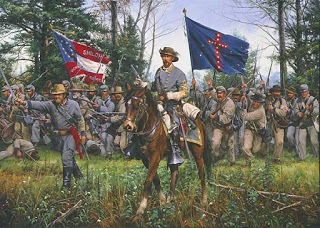
The 1st Kentucky Brigade is also known as the Orphan Brigade. Six different Kentucky Regiments were in this brigade. (Confederate Brigades were composed of two to six regiments.)
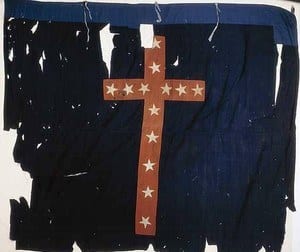 Some Kentucky regiments used flags with a upright Latin/Christian cross on them. The most prominent are the blue flags with large red Latin crosses adorned by 13 white stars. You can see an surviving example to the left.
Some Kentucky regiments used flags with a upright Latin/Christian cross on them. The most prominent are the blue flags with large red Latin crosses adorned by 13 white stars. You can see an surviving example to the left.
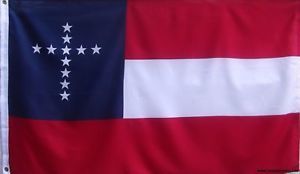
The 5th Kentucky used a different flag, as you see to the right.
We know that some Alabama regiments did the same with Latin crosses, and of course there is the famous 1st Missouri Cavalry Flag. (All still reproduced today, as is the 19th Alabama and others).
Latin cross flags met with objections in the South during the American Civil War. Some of the conservative Christian groups felt the upright cross misused their religious symbol. Some Jewish communities, loyal to their state, felt the upright cross was inappropriate on a battle flag.*
One letter, from an Arkansas soldier, ranted against what he felt was a “catholic” symbol. To make sure his wife knew what was meant, he drew the flag in color on the letter.
This was not a minor issue. In fact, it was a key point in the design of the Southern Cross Battle Flag, first used in Virginia after the Battle of First Manassas. The earliest design of the flag that later became the Battle Flag had an upright cross, not a diagonal one. (I cover this more thoroughly in my articles on the Confederate Battle Flag of the Southern Cross, available on request.)
The 5th Kentucky saw significant action at Chickamauga, the second bloodiest battle of the war (only Gettysburg had more casualties). They acquitted themselves well. One of the after-action reports contains the following:
On September 18, our forces advanced in several columns to cross the Chickamauga and give battle to the Federal army under General Rosecrans….
It was now moonlight, and Kelly returning to his command after a few minutes’ absence from it, the fire reopened, and continuing for a short time, ceased. It was the last fire of the day, and closed the battle. In the last attack made by Trigg and Kelly, Colonel Hawkins, of the Fifth Kentucky, a brave and skillful officer of Kelly’s brigade, captured 2 colonels, 1 lieutenant-colonel, a number of company officers, and 249 prisoners. The Twenty-second Michigan, Eighty-ninth Ohio, and part of the Twenty-first Ohio Regiments were captured by Trigg’s and Kelly’s brigades, and five stand of colors were taken by Sergeant Timmons, of the Seventh Florida Regiment, and by Privates Honaker, Harris, Hylton, and Carter, of the Fifty-fourth Virginia. Colonels Carlton, Le Favour, and Lieutenant-Colonel Glenn were among the prisoners.
*Jewish Southerners rallied to their states. The first Jewish residents of Charleston, SC, arrived 1695 and, by 1800, the largest Jewish community in America lived in Charleston (the oldest synagogue in America, K. K. Beth Elohim, was founded in Charleston). By 1861, a third of all Jews in America lived in Louisiana. A prominent Jewish figure, Judah P. Benjamin served as Confederate Attorney General, Secretary of War, and Secretary of State. Jewish officers served as the Quartermaster of the Confederate Army and the Surgeon General of the Army, and many gallant Jewish Southerners sacrificed their lives in battle. Anti-semitism existed in the South, but it was even worse in the North. General Grant issued his infamous General Order Number 11, expelling Jews from Kentucky, Tennessee and Mississippi. Lincoln had to order Grant to revoke his order.
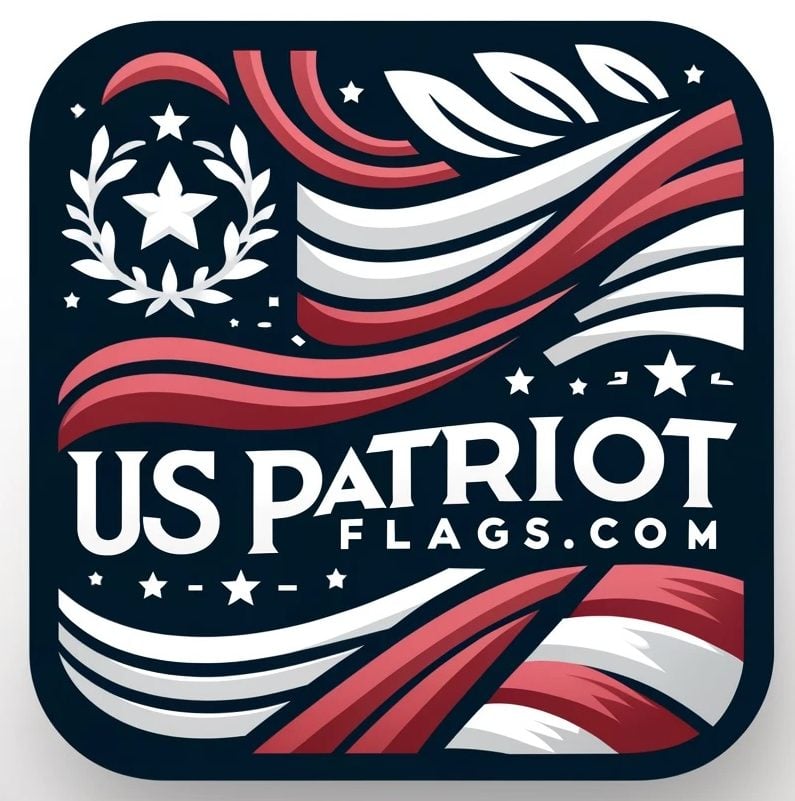
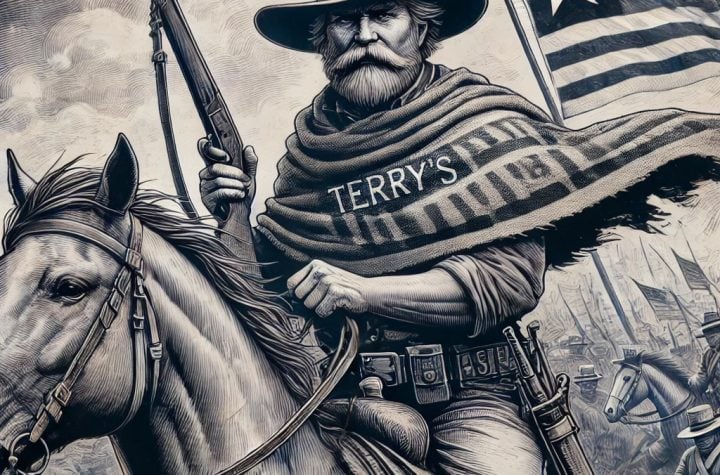

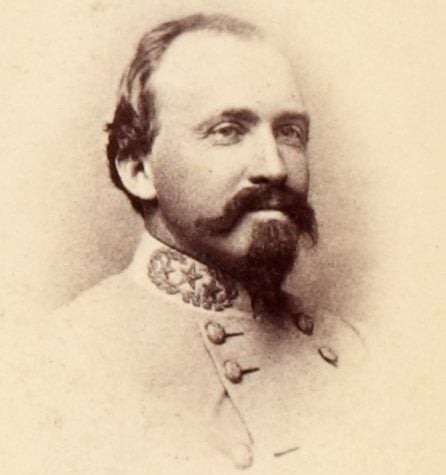
More Stories
General Dwight D. Eisenhower’s Reflection on Robert E. Lee
Sad Woke Charlottesville liberals Melt down infamous statue of Robert E Lee
NC Appeals Court rules for Town of Louisburg in removal of Confederate monument